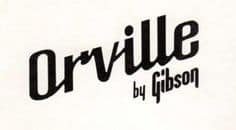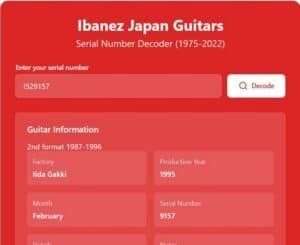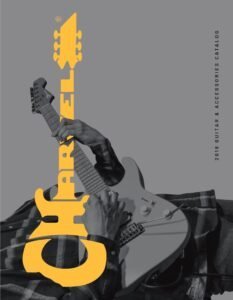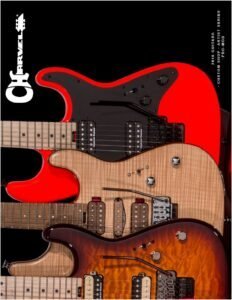Orville by Gibson, written in Japanese as オービル・バイ・ギブソン, is also referred to as simply Orville, written as オービル in Japanese. It operated as a subsidiary of Gibson, manufacturing guitars targeted for the Japanese market from the late 1980s to the late 1990s.
About Orville:

The names ‘Orville by Gibson‘ and then ‘Orville’ were chosen in honor of the brand’s founder, Orville Gibson. Guitars began production under the ‘Orville by Gibson’ brand in April 1988. So why did Gibson decide to manufacture guitars in Japan? To counteract the Japanese imitations, akin to Fender’s move in 1982 with the creation of Fender Japan. Numerous Japanese brands were producing exceptional copies of Gibson at lower prices (including Greco, Fernandes, Aria, Tokai, Ibanez, Yamaha, etc.). Despite the growing demand for these American guitars, the low value of the Yen made them unaffordable for many in Japan. This monetary issue wasn’t confined to Japan alone. Japanese-made copies of Gibson and Fender were sold worldwide. Gibson’s solution was to license its guitars in Japan, enabling them to offer these instruments at more competitive prices. The initial models produced included the ES-335, SG, and Les Paul Custom, equipped with Gibson USA humbuckers.
The ‘Orville’ series commenced in 1989 and 1990, presenting more budget-friendly models priced between ¥70,000 and ¥80,000 in Japan. These models featured Made in Japan pickups and a polyurethane finish.
On the other hand, the ‘Orville by Gibson’ series comprised higher-quality models ranging from ¥100,000 to ¥200,000, equipped with Gibson pickups and finished with nitrocellulose.
The ‘Orville by Gibson’ range expanded in 1991 to include acoustic guitars such as the J-45, J-160E, Hummingbird, Dove, and J-200.
The production of the “Orville” series experienced considerable success. However, the “Orville by Gibson” series was discontinued in 1995, followed by the conclusion of the “Orville” series in 1997, coinciding with the introduction of Epiphone Japan in 1998. Epiphone Japan unveiled two guitar series:
- The Lacquer series featuring humbuckers akin to those found in Orville guitars, exclusively available in the Japanese market.
- The Elitist series equipped with Gibson pickups, sold globally.






4 Responses
Hi Frankie, great info as usual. I have two Epiphone Elites from 2002, both made in the Fujigen factory, and EB3 and an SG. the EB3 is actually considerably better quality than the original Gibson I had back in the 70’s, the SG is probably too! but I didn’t have one back then.
I have taken the liberty of putting your web link on the Tokai forum, hope this is OK, as it should increase your viewing numbers.
best wishes
dave s
Hi Dave, sure this is OK! Thank you for your comment!
This is really interesting – thank you. I have a 2005 Epiphone LQ Les Paul custom, and info on these particular models seems thin on the forums. I don’t suppose you have any info?
No info, sorry.